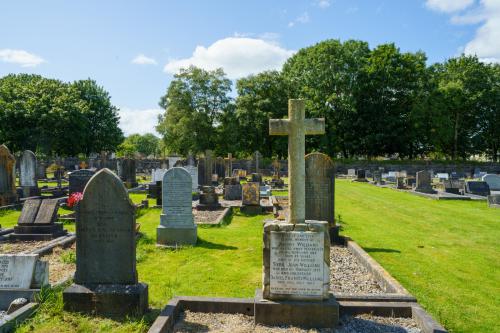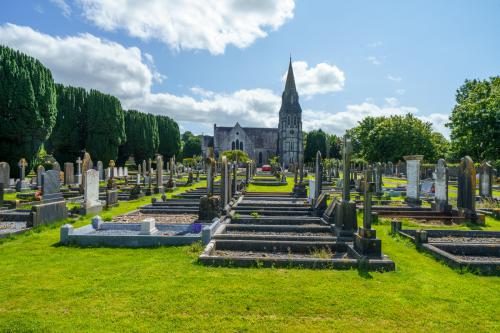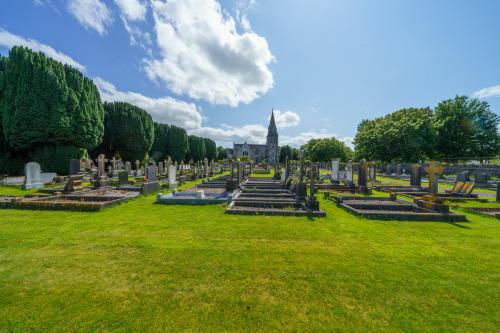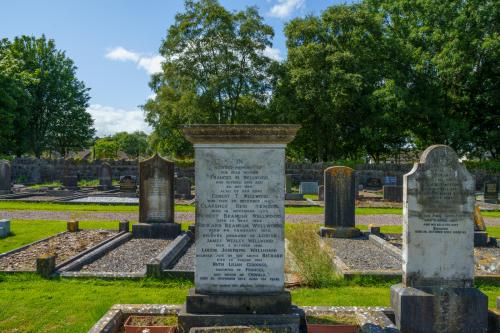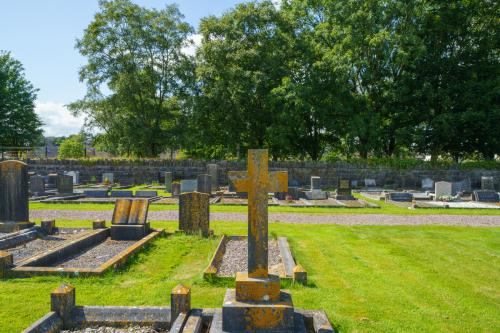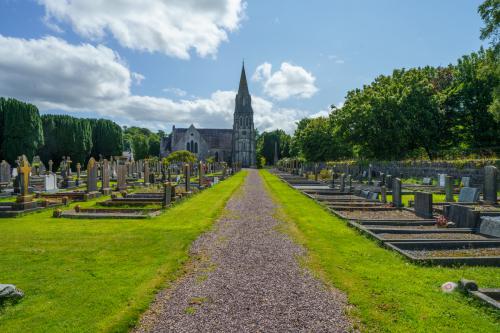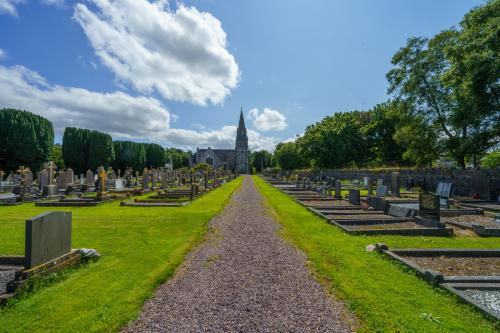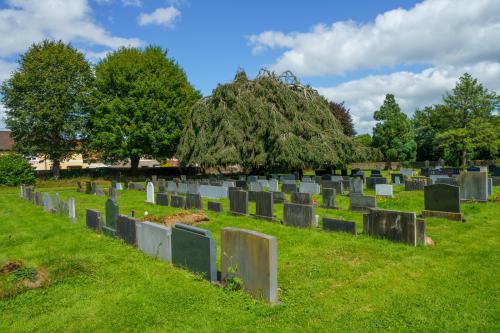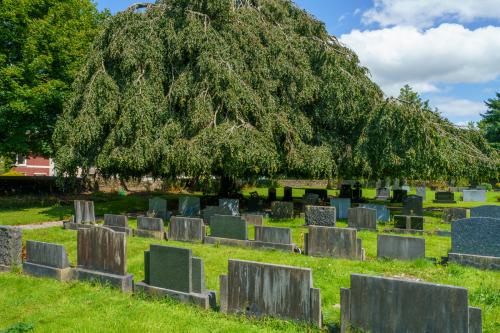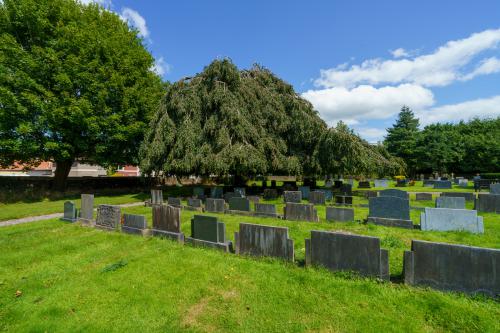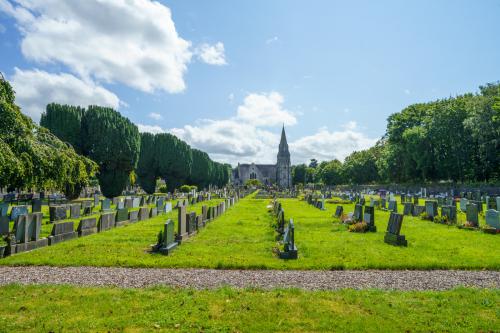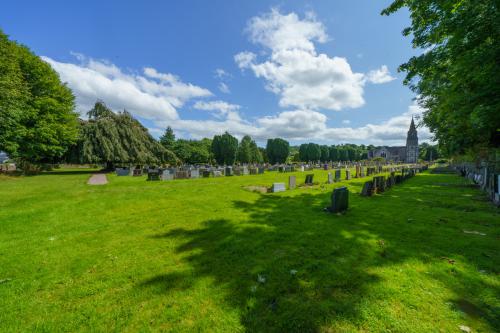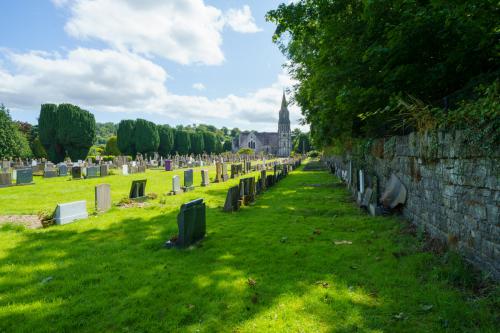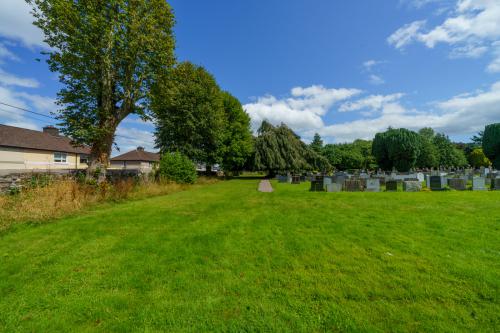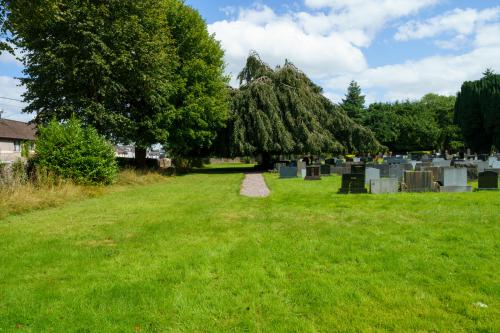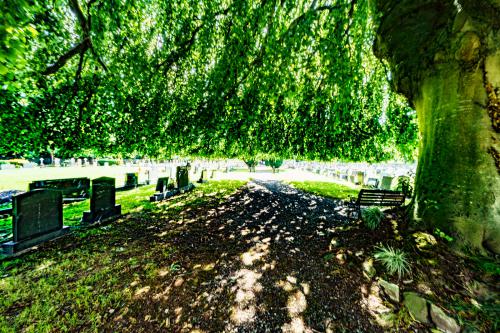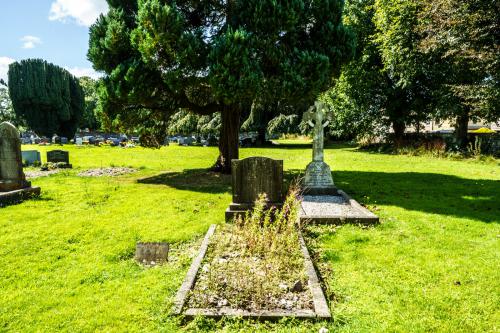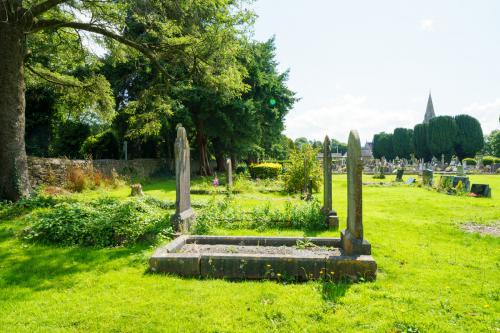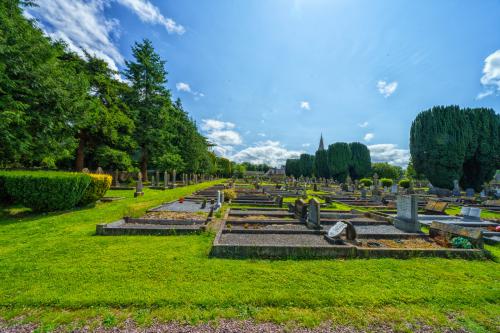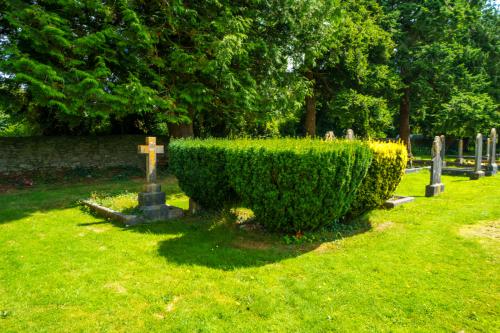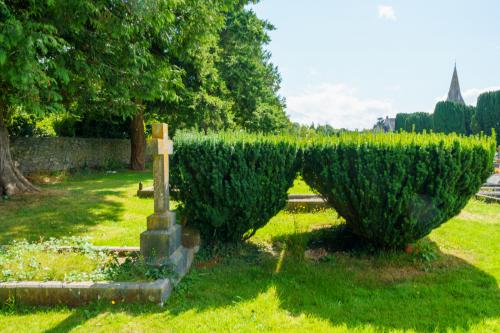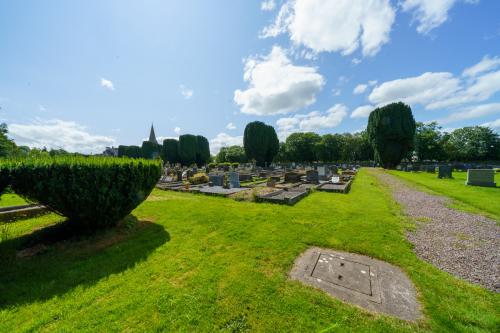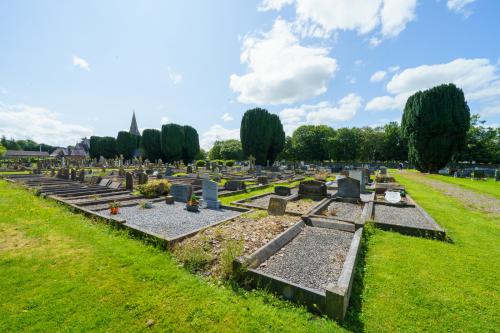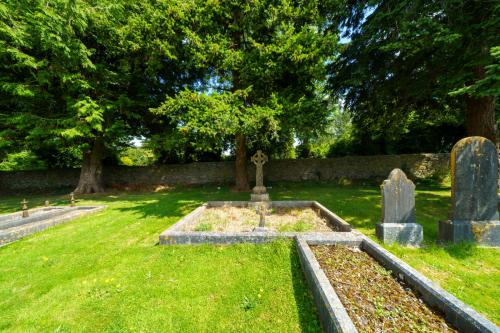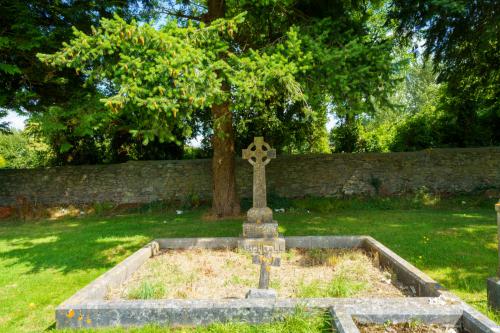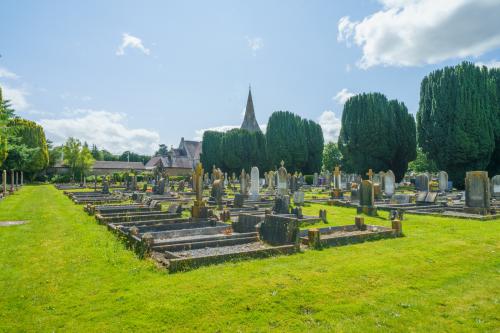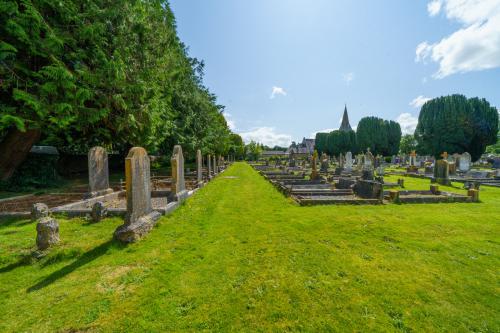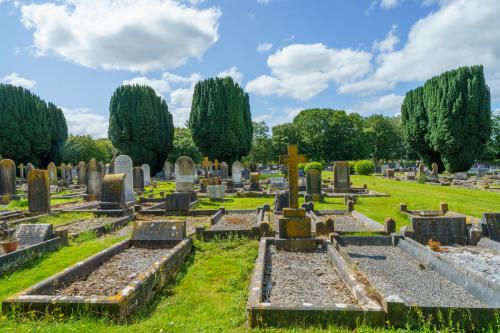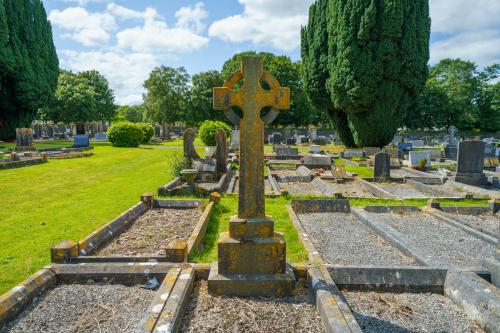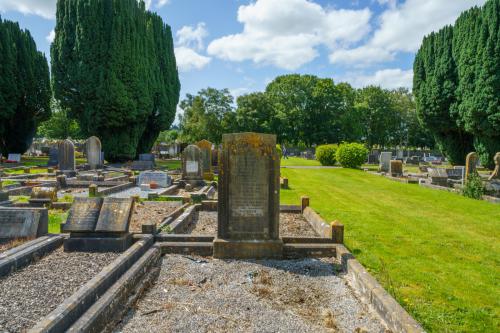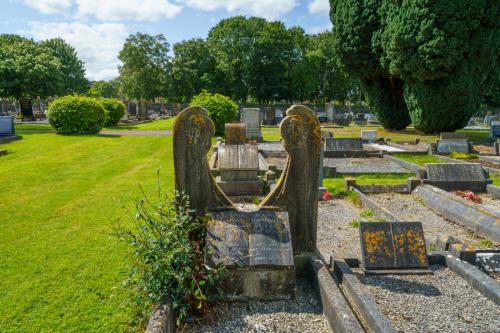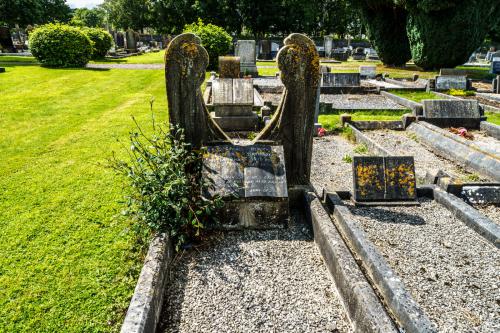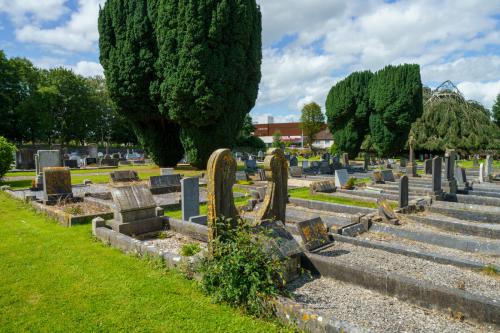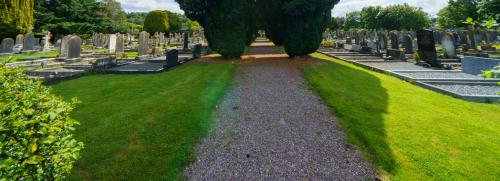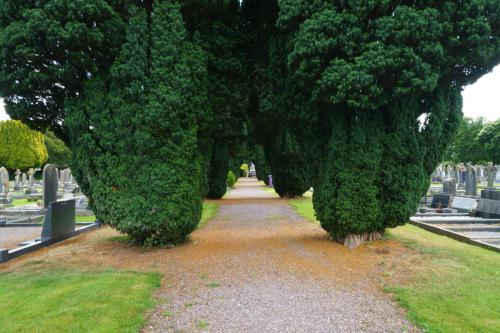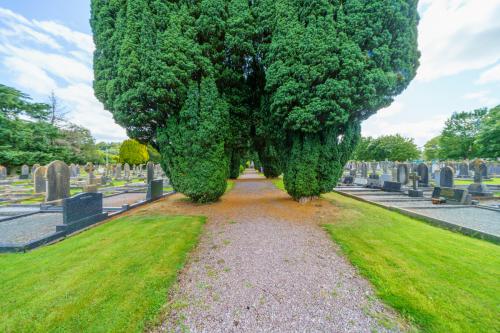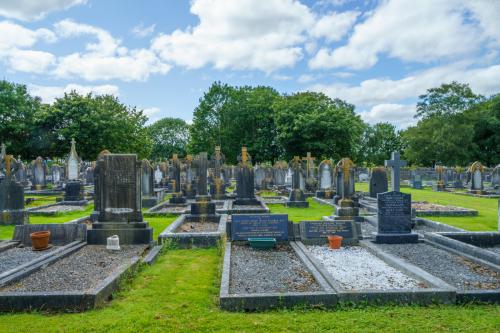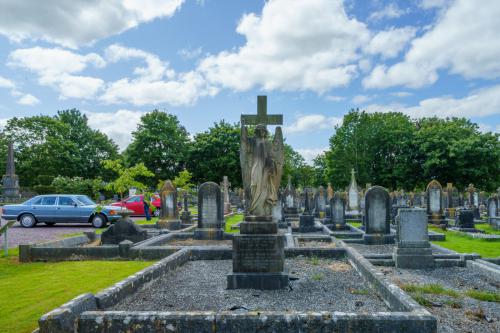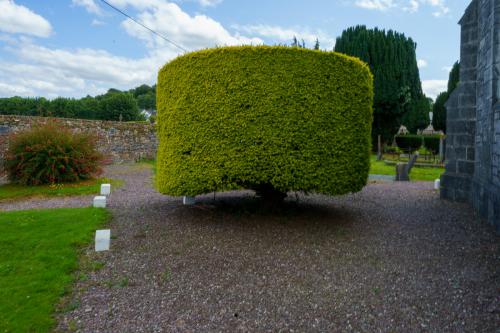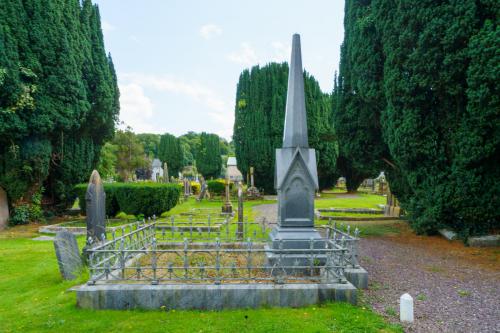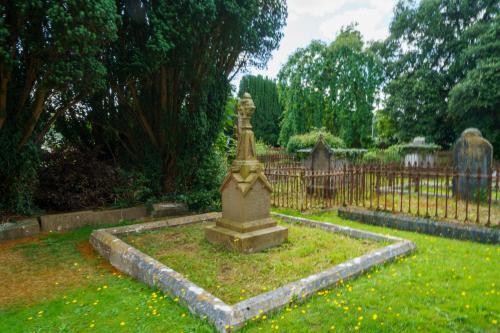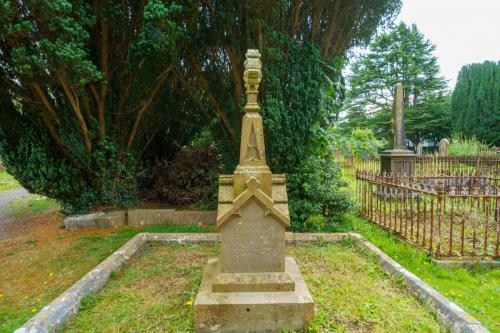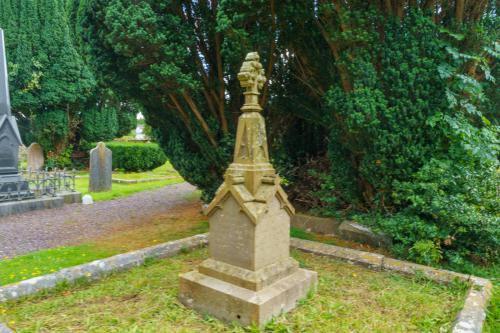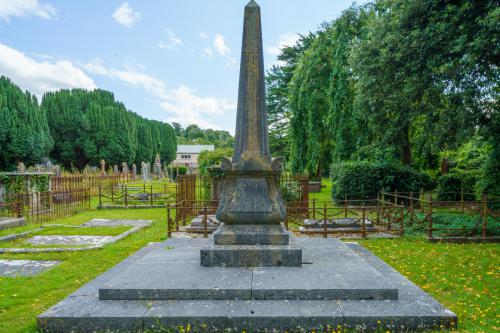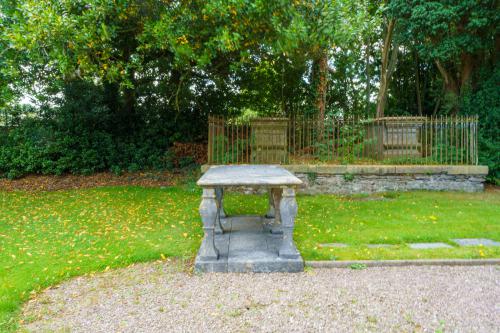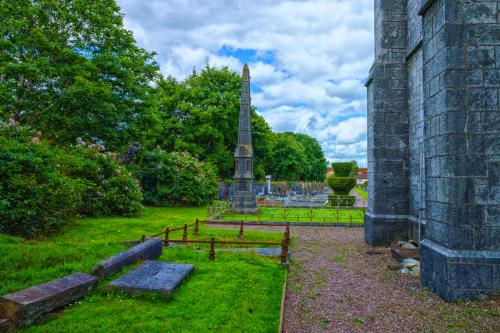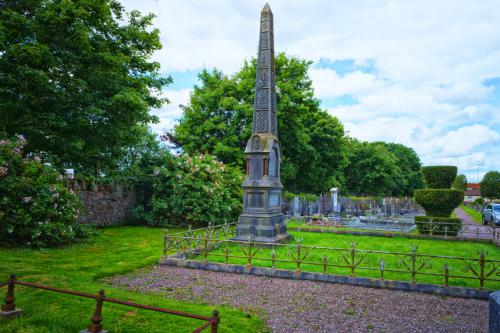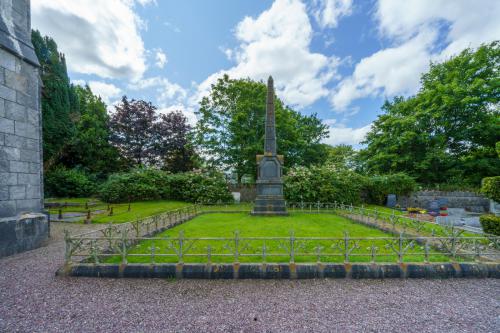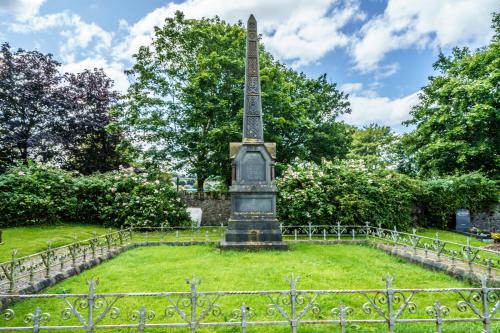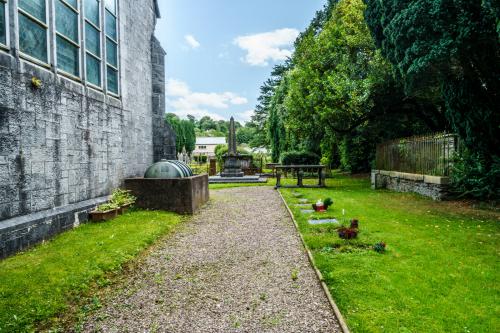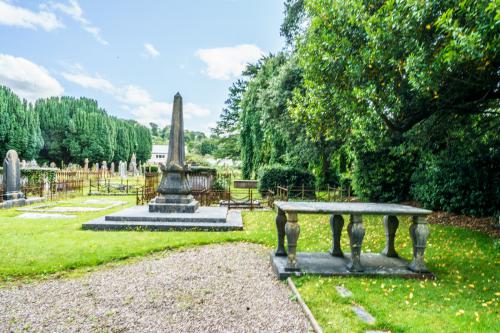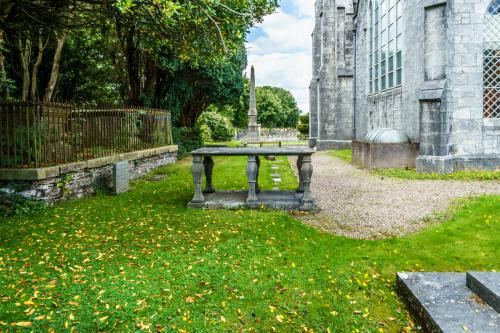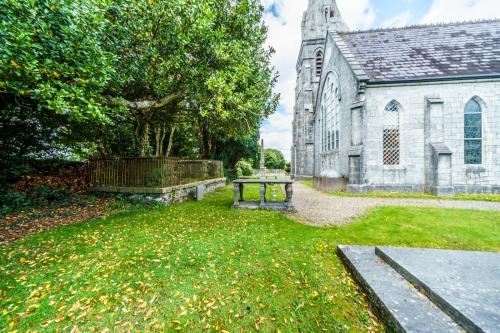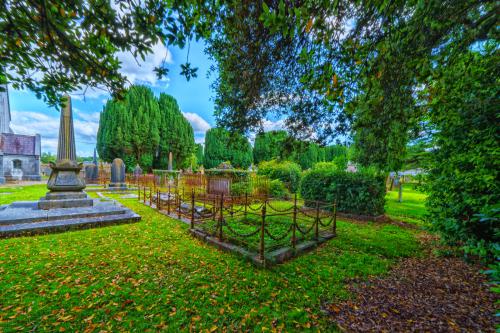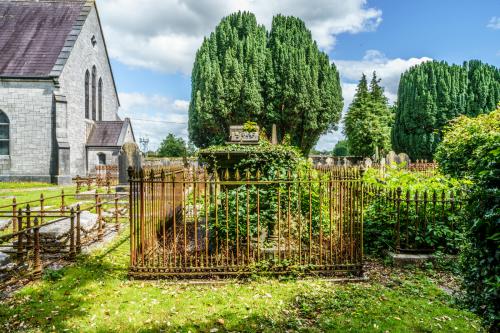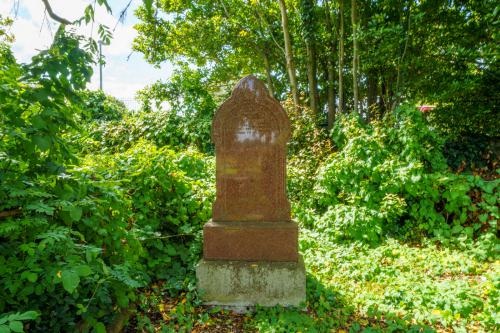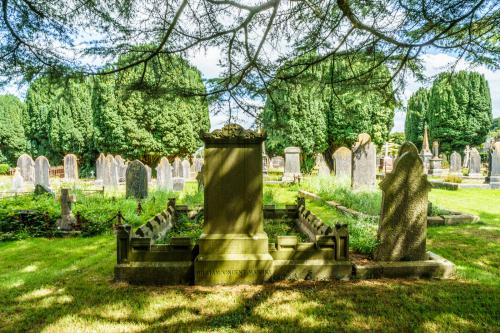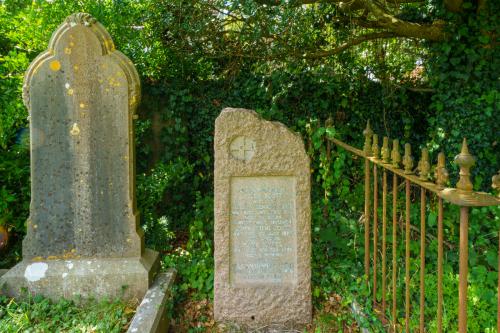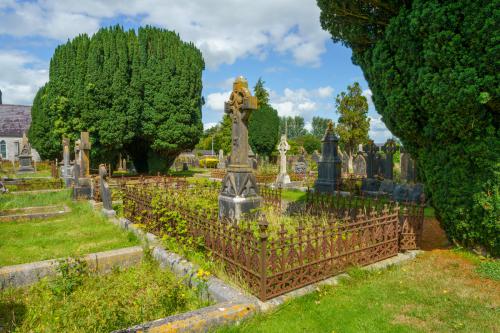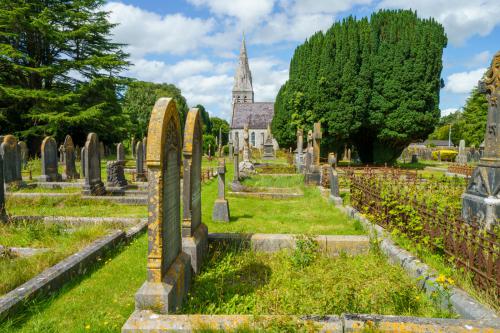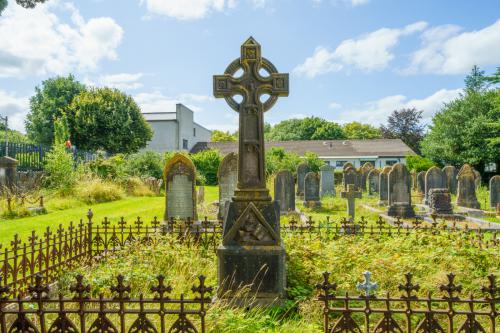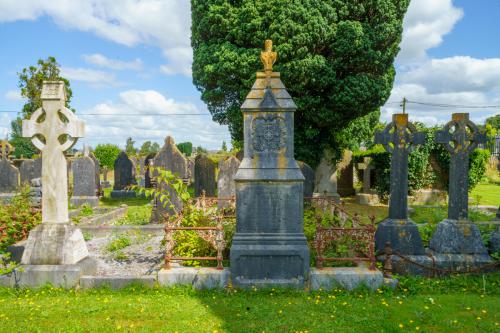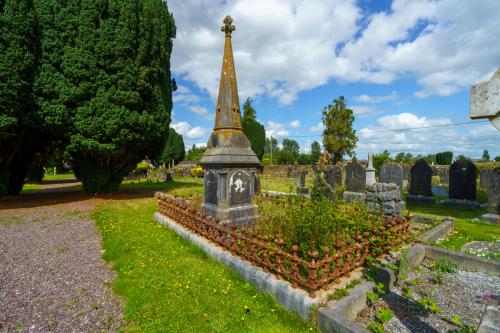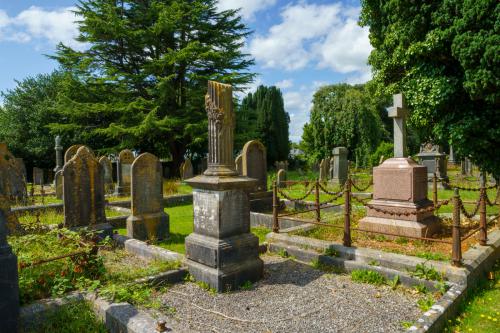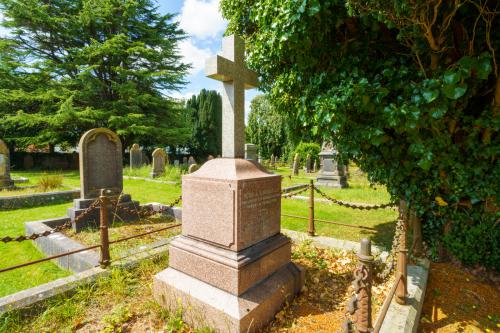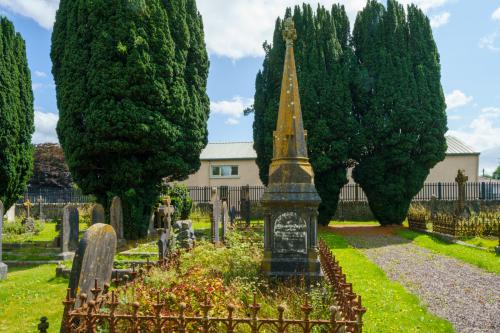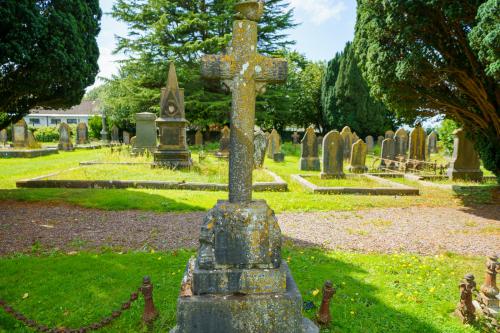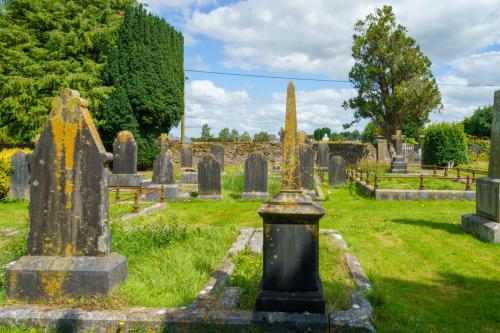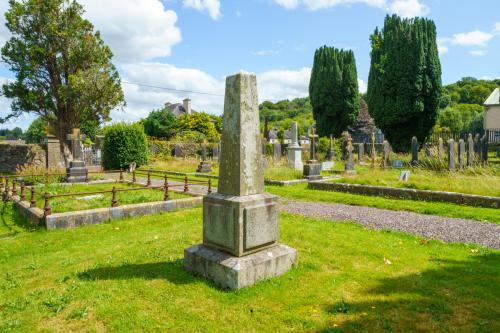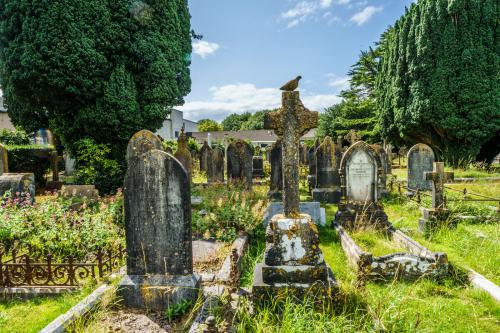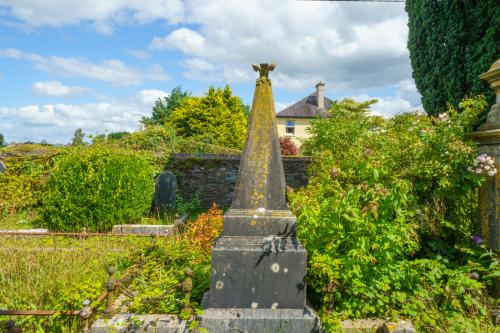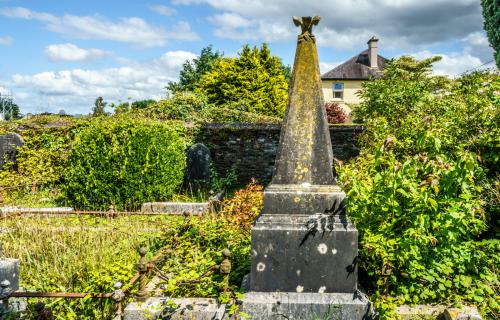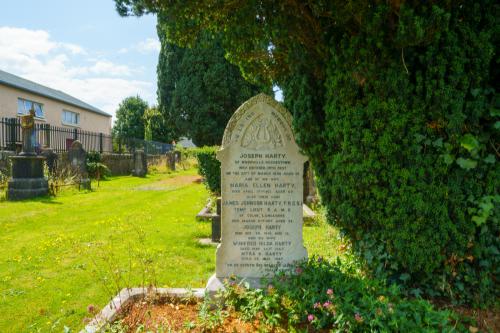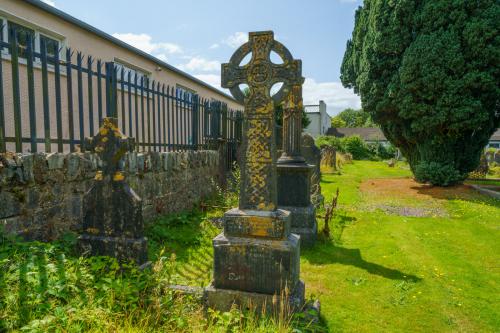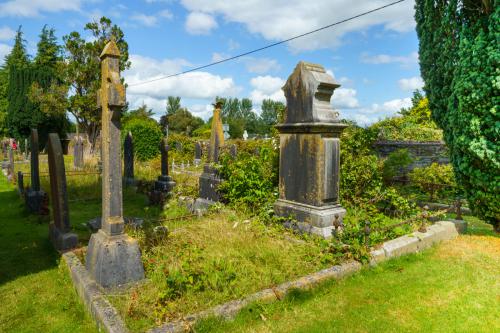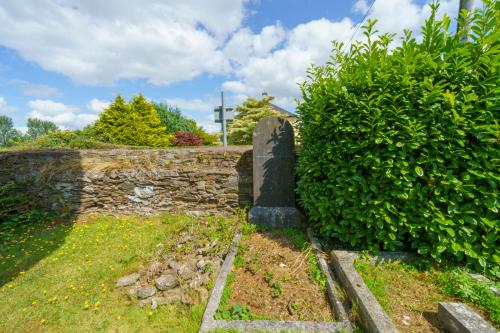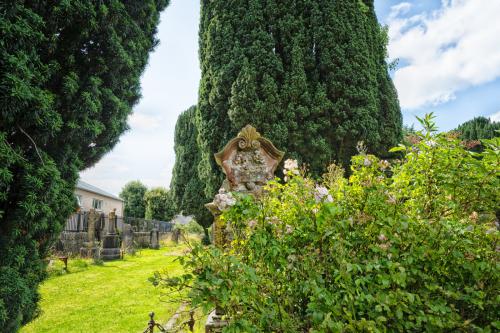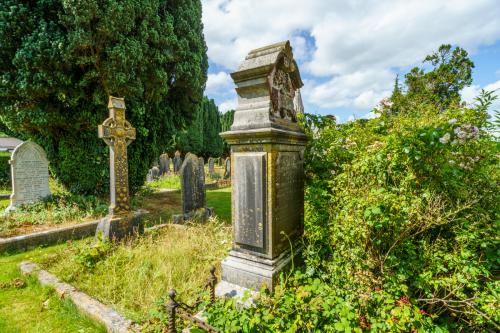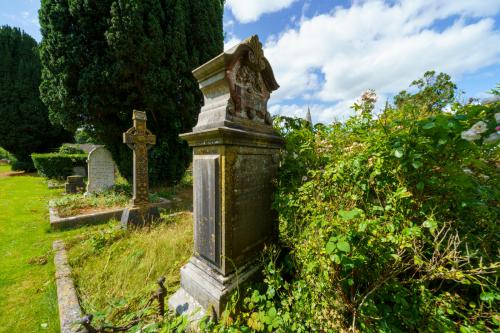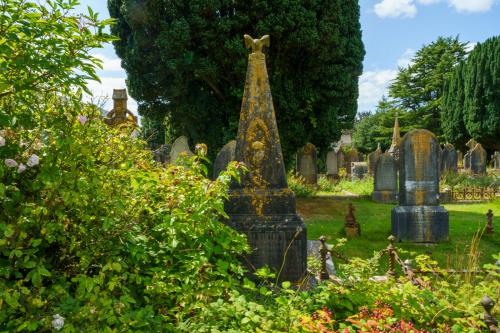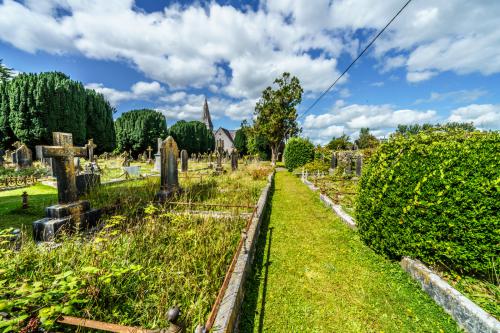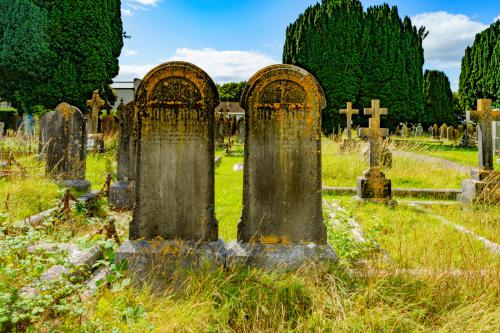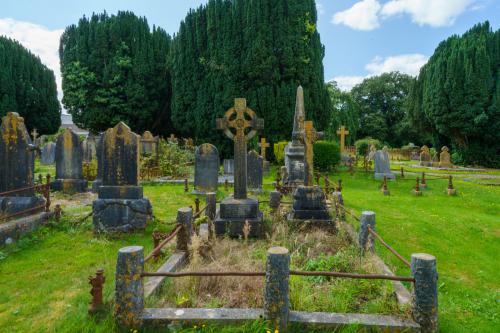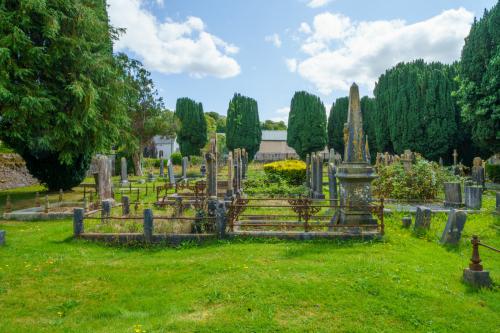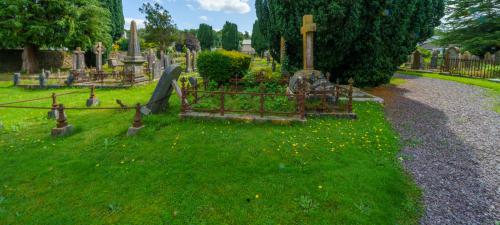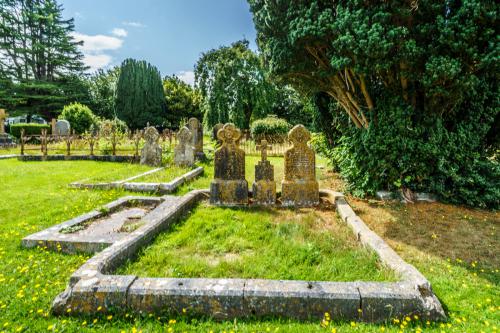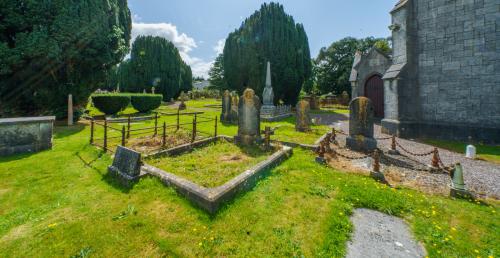ST LUKE'S GRAVEYARD DOUGLAS - CHURCH OF IRELAND
ST LUKE'S GRAVEYARD [CHURCH OF IRELAND - DOUGLAS]
I decided to visit St. Finbarr's Cemetery while in Cork.
I was advised by a bus driver that I should get the 216 bus but went to the wrong stop and ended up in Passage West where I was planning to visit the following day and while passing through Douglas village on my return journey I noticed an interesting old church and graveyard so I got off the bus in order to explore the graveyard and nearby.
Initially I thought the graveyard occupied both sides of the road but there was a big difference and it soon was apparent that the section near the church was Church Of Ireland while the other section was Catholic. The Church Of Ireland section featured many broken columns (rare in Catholic cemeteries) as representations of lives cut short. The Virgin Mary was confined to the Catholic section and there were many examples to be seen. Both sections were maintained but the CofI section was way more attractive.
This graveyard is an important part of the history of Cork city, with many well-known Cork figures buried here. Next to the spire is a monument to John Arnott, (1814-98) who founded Arnotts in Dublin. Businessman, philanthropist and former Lord Mayor of Cork (1859-61), he worked throughout his life to develop the industry and resources of Ireland. In the last 30 years of his life, he gave an average of £1,500 per year to public charity.
Another resident of the graveyard is Richard Caulfield, antiquarian and librarian, whose local history publications are still valued. One of the older graves belongs to the Besnards, a prominent Huguenot business family. By 1783, Julius Besnard owned the flax mills in Douglas. Besnard also helped to build the church that stood on this site from 1785 to 1874. 2 The first Rector of the new Douglas parish, Canon Samuel Hayman, (a noted antiquarian) is also buried here.
The great and the good were not the only ones to be buried here. Following the closure by Cork Corporation of graveyards within the city boundaries in 1870, city residents had to bury their dead in the suburbs. By the nineteenth century, urban graveyards were dangerously overcrowded, and ‘garden cemeteries’ began to be built outside many European cities. These burial grounds were not attached to a parish church and the graves were part of a landscaped park, with trees and pathways. In Cork, Fr Mathew had led the way, founding St Joseph’s Cemetery in the former Botanic Gardens in the 1830s. Interestingly, the planting and regular arrangement of St Luke’s graveyard is more like a garden cemetery than a parish burial ground. Its orderly layout dates from the 1870s, when the graveyard was remodelled at the same time as the new church was built.
The new church building, like the old, was built on an east-west orientation, with the chancel at the eastern end, so that the congregation could face towards the east. This was a typical orientation for a Christian sacred building. Maps from before the before the 1870s show that the graveyard once extended out from the eastern and western ends of the building. However, the bulk of the eastern end of the graveyard was divided from the church by a road, now called Churchyard Lane. In this eastern end was a watch-house, built to house a man who would guard the graves from robbers or, even worse, resurrectionists, who sold corpses to medical schools for dissection. The location of this watch house suggests that the majority of burials were in the eastern end of the cemetery. We can surmise that there were burials along the longitudinal sides also because a contemporary illustration of the eighteenth-century church shows a monument alongside it. But the construction of the new church saw a radical shift in the layout of the graveyard.
There are four World War I casualties buried here, and one from World War II. The contribution of women to the war can be seen in the Humby grave, where Private J. Humby is buried alongside Miss F. Humby, who worked for the Voluntary Aid Detachment, a nursing division.
The lodge house by the gate was built for the sexton, who was employed as a caretaker to the church and gravedigger for the graveyard. The house was built for Mr Thomas Morris, who was sexton from 1879 to 1912. His terms of employment were 14 shillings a week, with residence, and 2 tons of coal.
I decided to visit St. Finbarr's Cemetery while in Cork.
I was advised by a bus driver that I should get the 216 bus but went to the wrong stop and ended up in Passage West where I was planning to visit the following day and while passing through Douglas village on my return journey I noticed an interesting old church and graveyard so I got off the bus in order to explore the graveyard and nearby.
Initially I thought the graveyard occupied both sides of the road but there was a big difference and it soon was apparent that the section near the church was Church Of Ireland while the other section was Catholic. The Church Of Ireland section featured many broken columns (rare in Catholic cemeteries) as representations of lives cut short. The Virgin Mary was confined to the Catholic section and there were many examples to be seen. Both sections were maintained but the CofI section was way more attractive.
This graveyard is an important part of the history of Cork city, with many well-known Cork figures buried here. Next to the spire is a monument to John Arnott, (1814-98) who founded Arnotts in Dublin. Businessman, philanthropist and former Lord Mayor of Cork (1859-61), he worked throughout his life to develop the industry and resources of Ireland. In the last 30 years of his life, he gave an average of £1,500 per year to public charity.
Another resident of the graveyard is Richard Caulfield, antiquarian and librarian, whose local history publications are still valued. One of the older graves belongs to the Besnards, a prominent Huguenot business family. By 1783, Julius Besnard owned the flax mills in Douglas. Besnard also helped to build the church that stood on this site from 1785 to 1874. 2 The first Rector of the new Douglas parish, Canon Samuel Hayman, (a noted antiquarian) is also buried here.
The great and the good were not the only ones to be buried here. Following the closure by Cork Corporation of graveyards within the city boundaries in 1870, city residents had to bury their dead in the suburbs. By the nineteenth century, urban graveyards were dangerously overcrowded, and ‘garden cemeteries’ began to be built outside many European cities. These burial grounds were not attached to a parish church and the graves were part of a landscaped park, with trees and pathways. In Cork, Fr Mathew had led the way, founding St Joseph’s Cemetery in the former Botanic Gardens in the 1830s. Interestingly, the planting and regular arrangement of St Luke’s graveyard is more like a garden cemetery than a parish burial ground. Its orderly layout dates from the 1870s, when the graveyard was remodelled at the same time as the new church was built.
The new church building, like the old, was built on an east-west orientation, with the chancel at the eastern end, so that the congregation could face towards the east. This was a typical orientation for a Christian sacred building. Maps from before the before the 1870s show that the graveyard once extended out from the eastern and western ends of the building. However, the bulk of the eastern end of the graveyard was divided from the church by a road, now called Churchyard Lane. In this eastern end was a watch-house, built to house a man who would guard the graves from robbers or, even worse, resurrectionists, who sold corpses to medical schools for dissection. The location of this watch house suggests that the majority of burials were in the eastern end of the cemetery. We can surmise that there were burials along the longitudinal sides also because a contemporary illustration of the eighteenth-century church shows a monument alongside it. But the construction of the new church saw a radical shift in the layout of the graveyard.
There are four World War I casualties buried here, and one from World War II. The contribution of women to the war can be seen in the Humby grave, where Private J. Humby is buried alongside Miss F. Humby, who worked for the Voluntary Aid Detachment, a nursing division.
The lodge house by the gate was built for the sexton, who was employed as a caretaker to the church and gravedigger for the graveyard. The house was built for Mr Thomas Morris, who was sexton from 1879 to 1912. His terms of employment were 14 shillings a week, with residence, and 2 tons of coal.
You will find links to buy products from Amazon, Google and other partners. If you click on these links, you’ll find that the URL includes a small extra piece of text which identifies that the click came from my websites. This text is an affiliate code, and it means that I get a small percentage of the money you spend if you choose to buy that product, or, in some cases, other products from the site soon after. These affiliate links help pay the costs of producing my websites and ensure that the content is free to you.
